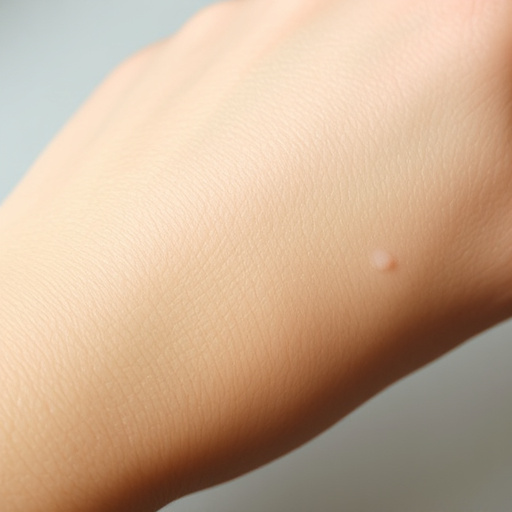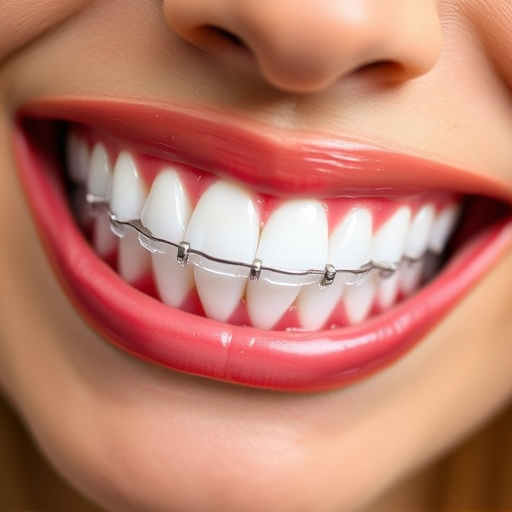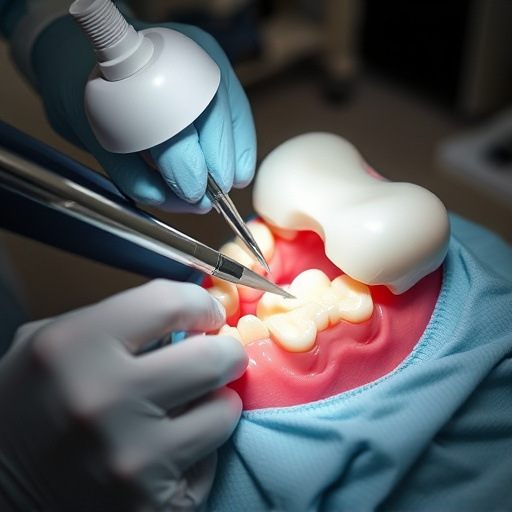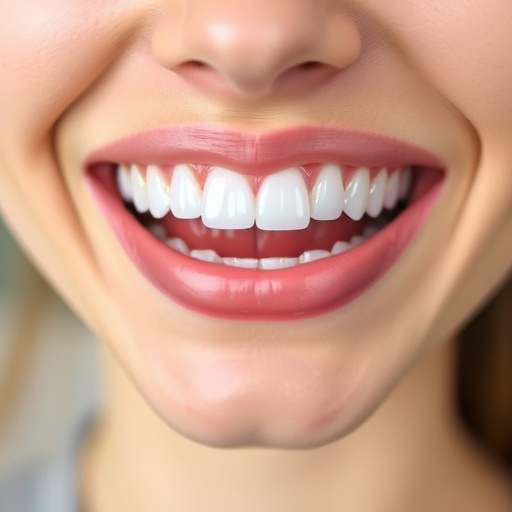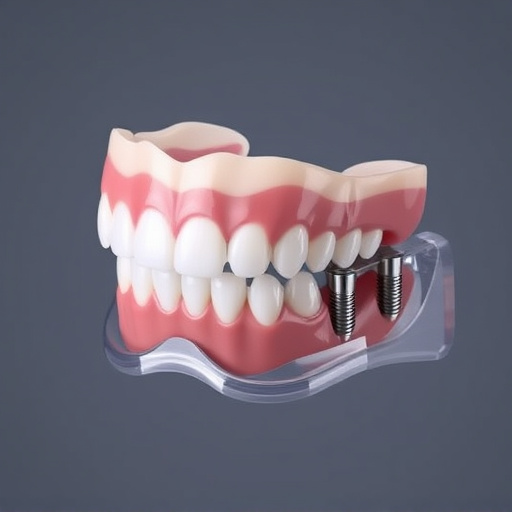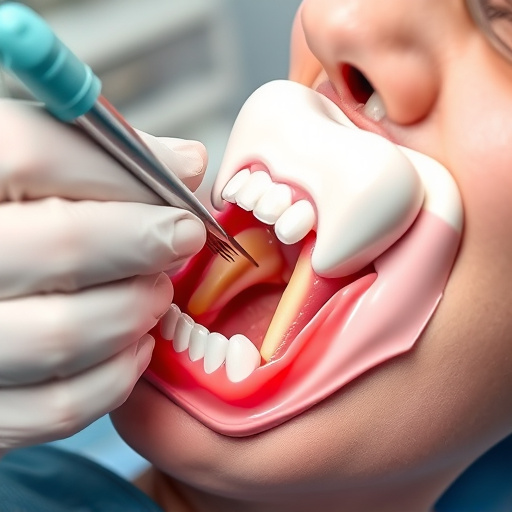Gum disease causes significant bone loss through osteolysis, treatable with bone grafting. This procedure involves surgically placing bone substitute materials to stimulate new growth and support tooth repair. Osseointegration ensures dental bonding for long-lasting results. Excellent oral hygiene prevents further bone loss. Bone grafting offers tailored solutions, considering extent of bone loss, oral health, and aesthetic goals, leading to restored structural integrity and enhanced oral aesthetics with proper post-treatment care.
Bone grafting treatment has emerged as a powerful solution for gum disease-related bone loss, offering hope for patients seeking to restore oral health. Gum disease can lead to significant bone loss around teeth, creating a need for advanced interventions. This article delves into the understanding of bone loss in gum disease, explores various bone grafting treatment options, and provides insights into the procedure and expected outcomes for those considering this life-changing therapy.
- Understanding Bone Loss in Gum Disease
- Exploring Bone Grafting Treatment Options
- The Procedure and Expected Outcomes
Understanding Bone Loss in Gum Disease
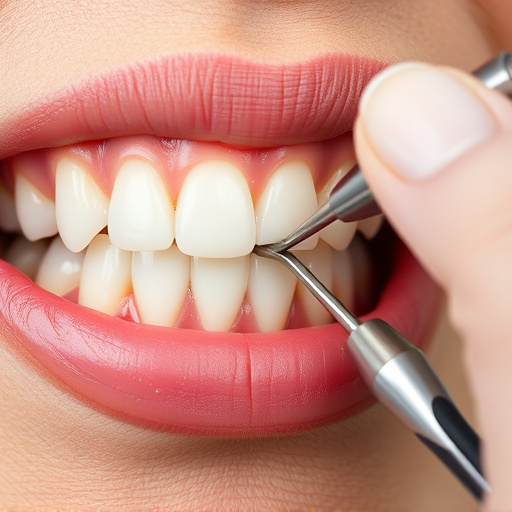
Gum disease is a common oral health issue that often goes unnoticed until significant damage has occurred. One of the primary consequences of gum disease is bone loss, where the supportive structures holding teeth in place start to deteriorate. This process can lead to tooth mobility and even tooth loss if left untreated. Bone loss in gum disease occurs due to an inflammatory response triggered by bacterial infections in the oral cavity. The body’s natural defense mechanisms cause the breakdown of bone tissue, a condition known as osteolysis. Over time, this can result in considerable bone loss around the affected teeth.
Bone grafting treatment is often recommended as a successful strategy to combat gum disease-related bone loss. This procedure involves surgically placing a bone substitute material into the damaged areas to stimulate new bone growth and provide a solid foundation for tooth repair. By promoting osseointegration, or the fusion of the graft with existing bone, dental bonding becomes more feasible, ensuring long-lasting results. Additionally, proper teeth cleaning and maintaining excellent oral hygiene are essential steps in preventing further bone loss and supporting overall dental health.
Exploring Bone Grafting Treatment Options
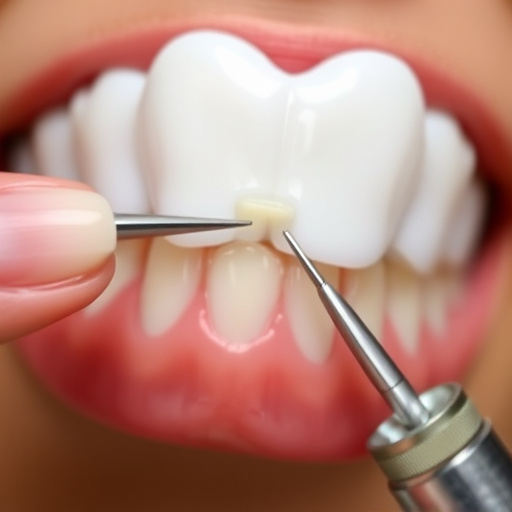
Bone grafting treatment offers a promising solution for individuals facing gum disease-related bone loss. This advanced dental procedure involves strategically placing a bone substitute material into the affected areas to stimulate new bone growth and restore structural integrity. Exploring various bone grafting treatment options is essential, as each case is unique. Dentists consider factors like the extent of bone loss, overall oral health, and aesthetic goals when recommending specific procedures.
From autologous bone grafts harvested from the patient’s own body to allogeneic grafts sourced from donor banks, several choices cater to different needs. In some cases, dental professionals might suggest guided tissue regeneration (GTR) techniques to encourage bone formation. Restorative dentistry plays a vital role in maintaining oral health and aesthetics after bone grafting treatment, ensuring long-lasting results alongside proper teeth cleaning and maintenance practices.
The Procedure and Expected Outcomes
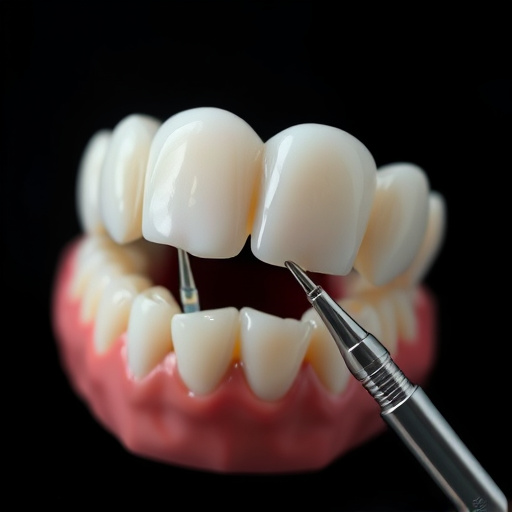
Bone grafting treatment for gum disease-related bone loss involves a precise surgical procedure where a bone substitute is inserted into the affected area to stimulate new bone growth. This advanced dental technique is designed to replenish and rebuild the jawbone structure, which can weaken and deteriorate due to periodontal disease. During the operation, a small incision is made in the gums to access the bone, ensuring minimal discomfort. The graft material, often derived from natural sources or synthetic alternatives, acts as a scaffold, encouraging the body’s natural healing process to create new, healthy bone tissue.
The expected outcomes of this treatment are significant and multifaceted. Not only does it aim to restore the jawbone’s structural integrity, but it also provides a solid foundation for future dental procedures like dental crowns or implants. By integrating with the existing bone, the graft ensures stability and longevity, making it an effective solution in preventive dentistry. Moreover, improved bone health can indirectly benefit overall oral health, reducing the risk of further gum disease and associated complications, including the need for extensive treatments such as dental fillings.
Bone grafting treatment offers a promising solution for individuals suffering from gum disease-related bone loss. By understanding the underlying causes of this condition and exploring modern treatment options like bone grafting, patients can achieve significant improvements in oral health. The procedure, with its advanced techniques and careful planning, aims to restore lost bone volume and provide a solid foundation for dental implants. With successful outcomes, bone grafting treatment not only enhances smile aesthetics but also restores confidence and overall well-being.
